
This figure represents the fifth and final model in the Mini Ancient Fish series 2 from Bandai. In this case, it a fish well-known as ‘ancient’, a Chinese sturgeon Acipenser sinensis. Sturgeons are well known as primitive fish, with the order Acipenseriformes represented in the Jurassic, and the earliest member of the sturgeon family Acipenseridae being known from the late Cretaceous, included in the same genus Acipenser (although it is believed that this genus is paraphyletic–so the taxonomy could change). There have been a few other sturgeon figures on the blog, but this is the first Chinese sturgeon.

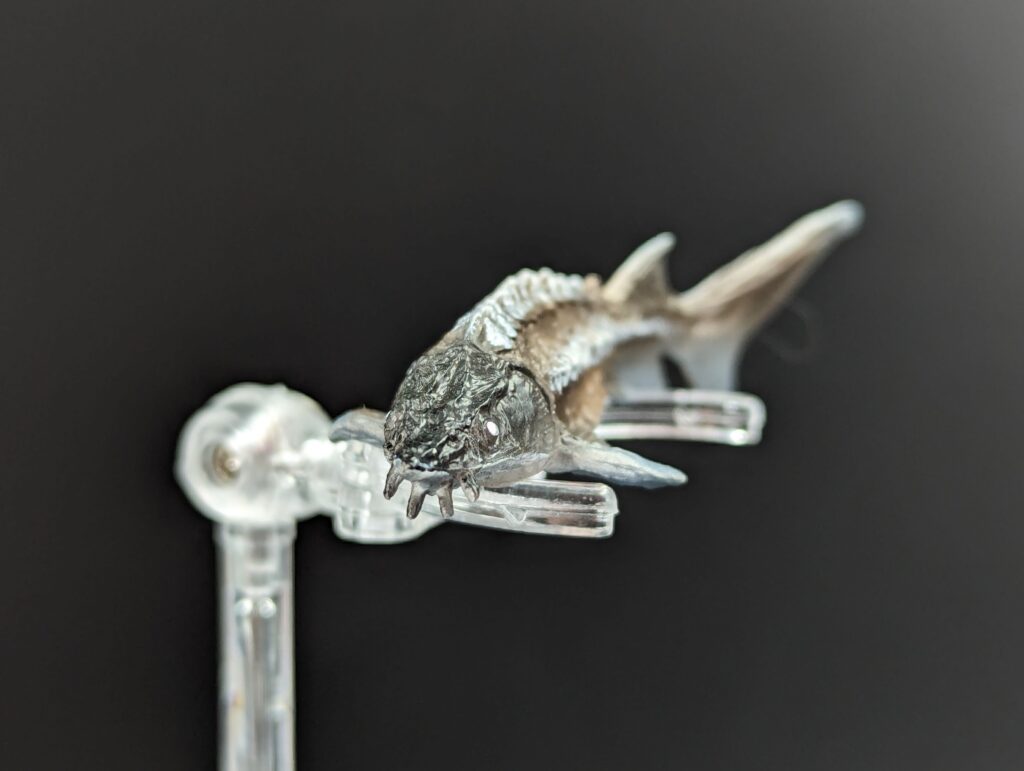
Chinese sturgeon, like most congenerics, are pelagic swimmers, although their morphology gives them an advantage when swimming along the bottom. They are anadromous like salmon, with the young hatching far upriver then heading out to sea to grow and mature, then head back upstream to breed. When unencumbered their migrations can be the longest of of any sturgeon, over 3200km. The original range of the Chinese sturgeon is primarily in the coastal areas of China and the Sagami Sea area of Japan, and inland in rivers in China, Japan and possibly the Korean peninsula, but are now reduced heavily and extirpated from much of their range (a situation faced by many sturgeon species, some worse off, some slightly better off). The IUCN lists the Chinese sturgeon as Critically Endangered, and CITES lists them as Appendix II. In China this species is regarded with National Treasure status, on par with the giant panda, and is part of a number of research and breeding programs there. Some good news is that at one point the species was thought to potentially be extirpated after dam construction in the Yangtze river, but juveniles were found in a new spawning area a few years later. Things still aren’t great though (a somewhat sympatric Chinese species, the Yangtze sturgeon A. dabryanus, is listed as EW – Extinct in the Wild).
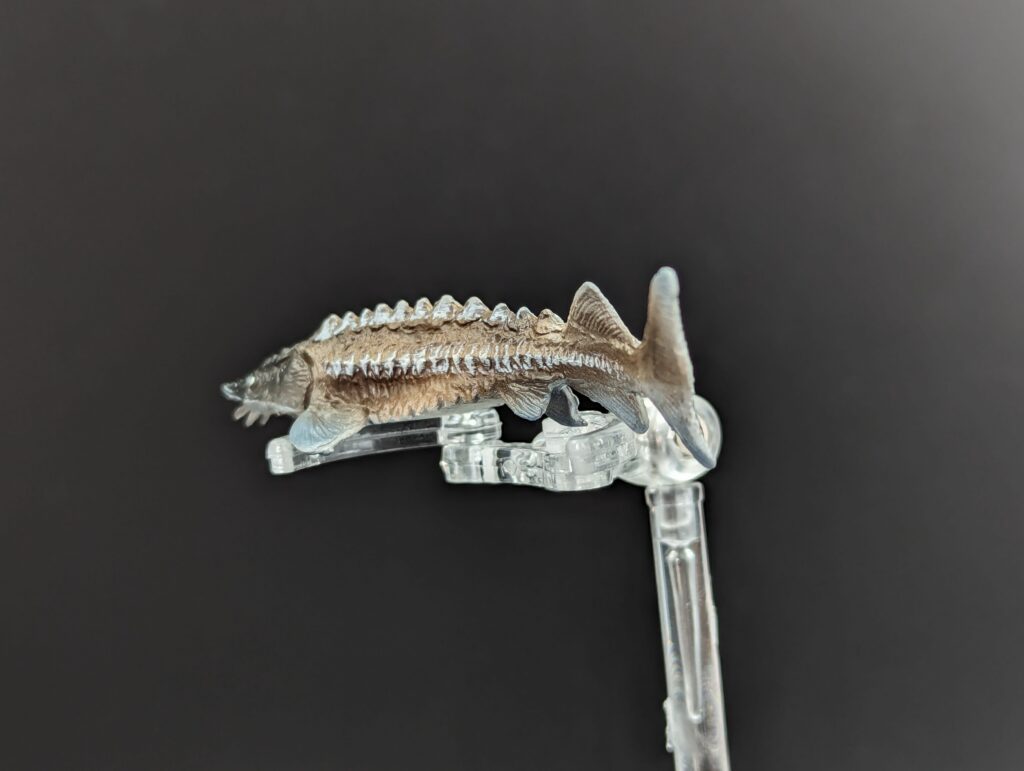
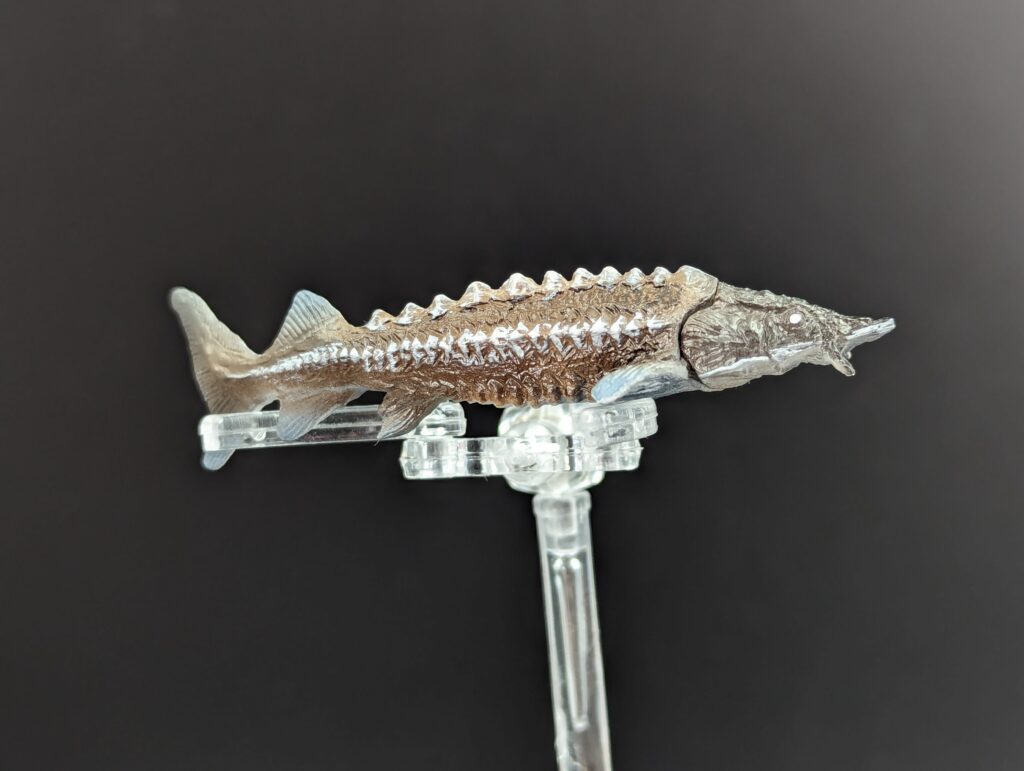
As with most sturgeon species, the Chinese sturgeon is a large fish identifiable by the long, shark-like body and five distinct rows of sharp scutes along the back and sides. Historically the species has been recorded as large as 5 metres, but now are more commonly 2 metres or less (FishBase shows the largest record as about 3.5 m, and a common length of 39cm). The face is acuminate (comes to a point! Vocabulary!), with a ventrally-placed mouth preceded by four sensitive barbels and a rostrum that contains electroreceptive pores (Ampullae of Lorenzini, familiar to most people in sharks and rays, but also in many primitive bony fish). All of this sensory equipment is there to help the sturgeon find its prey; in the case of the Chinese sturgeon, that means pretty much any organism that fits (including fish, arthropods and shellfish); juveniles hunt smaller prey including sifting through substrate.
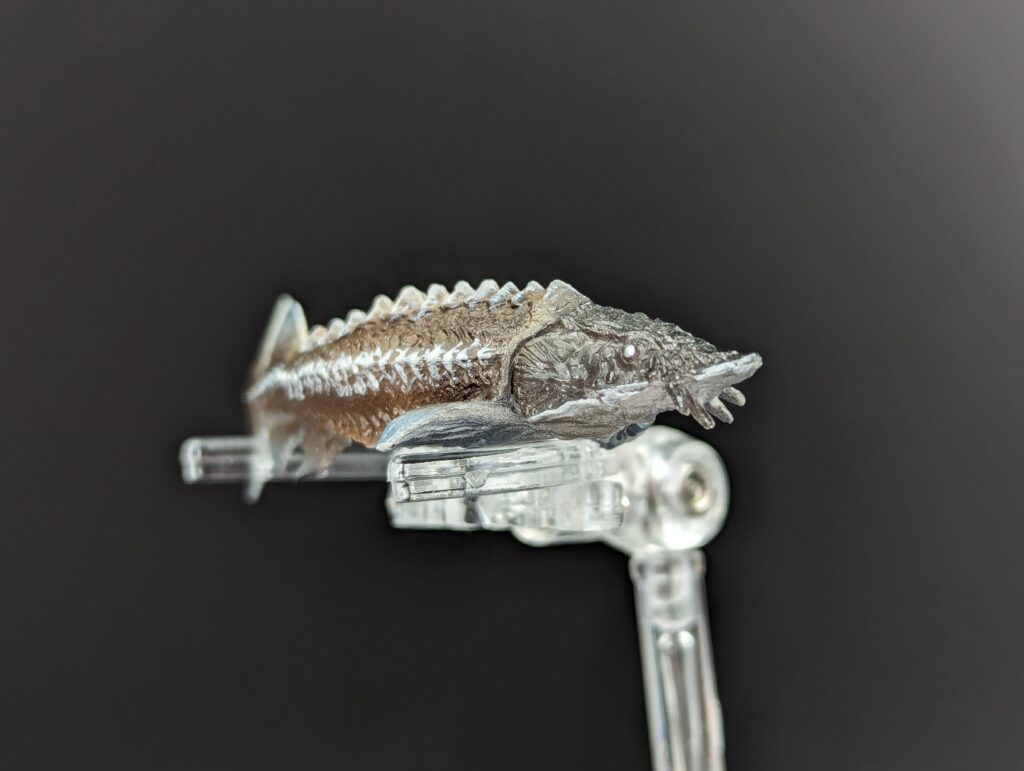
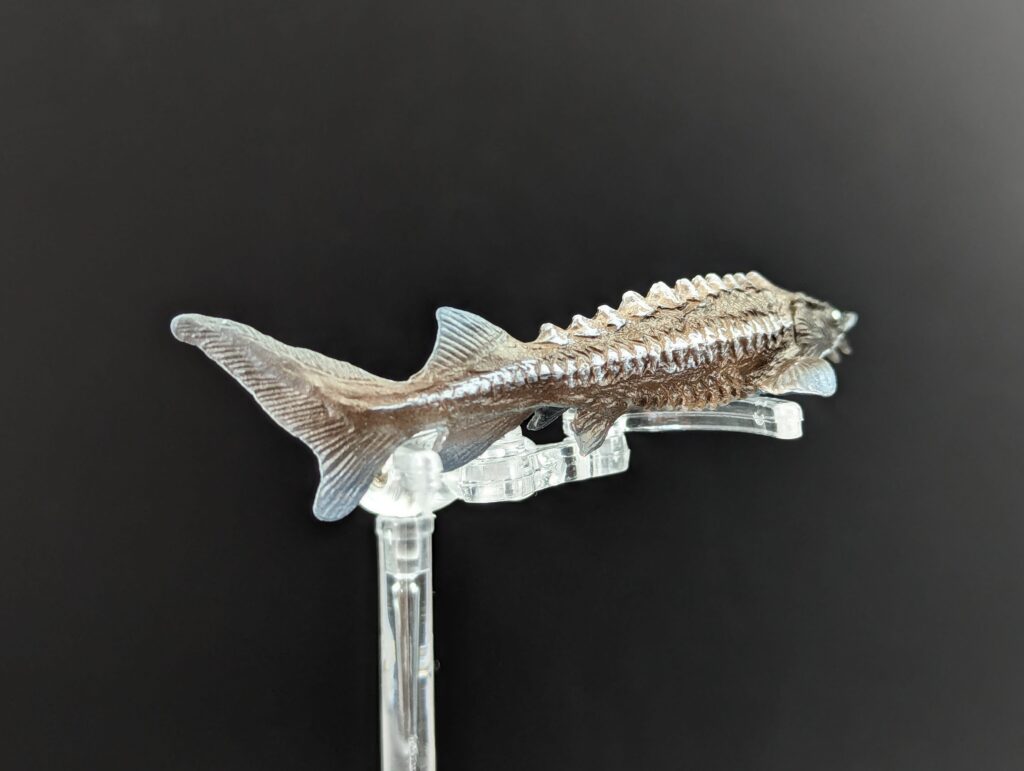
The figure itself is great little model, about 8.3cm in length. So the scale depends on what length you are using for the species–at the common length of 39cm, it would be 1:5 scale; at the larger modern length of 2 metres, it would be around 1:24; and at the historical record of 3.46 metres, the scale would be around 1:42. So in short, it depends on what you want. Plus, it appears to be a younger individual, probably a young adult. This can be inferred from the scutes on the figure–the scutes on sturgeon are quite sharp, and serve as protective armour for the sturgeon. But it’s primarily useful for juveniles and smaller adults, when they are closer together and cover more of the relative surface of the body. Once the sturgeon is much larger, size is their greatest protection, and the scutes appear smaller against the body, with the rows more spaced out. I’ve personally seen this on white sturgeon–one- and two-year olds look quite spiky, a 3 metre individual looks like a sausage with five rows of bumps. The tight spacing of the rows on the figure, and the relatively prominent size of the scutes, this is why I wouldn’t expect this to represent a massive, older adult.
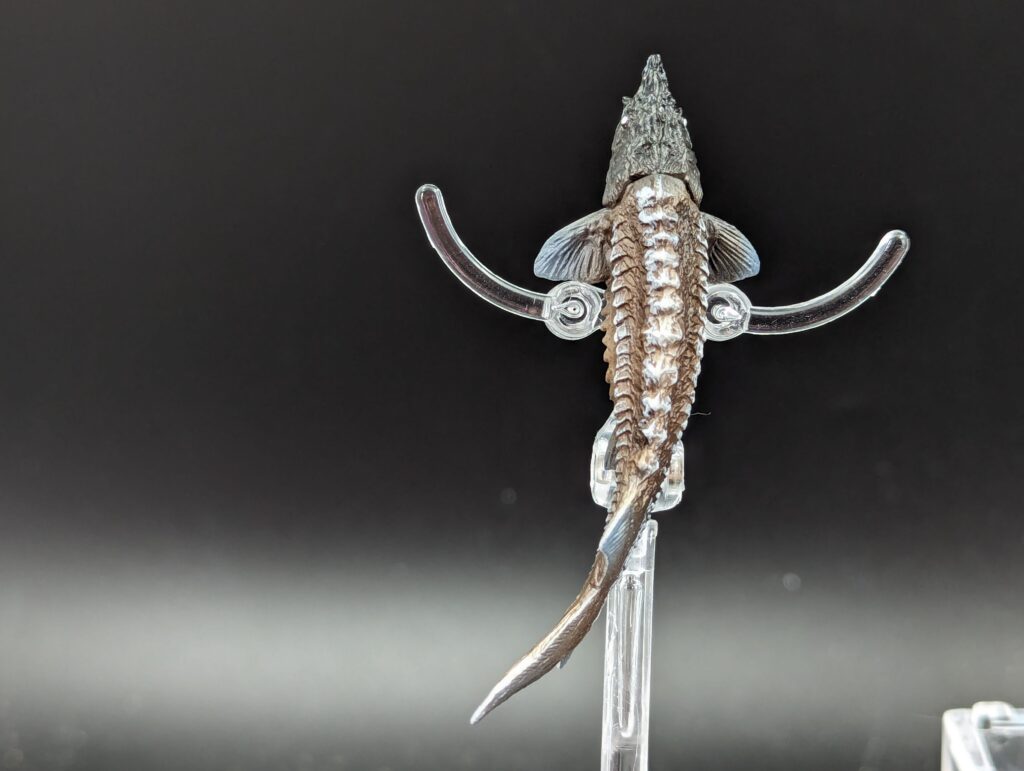
The figure itself is posed in a slight curve, positioned in a neutral swimming pose. It is attached with a raised rocky base, and rotating it keeps it in a fairly horizontal position. The overall colouring is primarily a light raw umber, sort of brownish tones that carry over the entire body from the sides to the margin of the belly, and extending up the lobe of the heterocercal caudal fin From what I can tell, this might be a little dark but not unreasonable; or it might be less black that it should be. The scutes are picked out in stark white or light grey with umber washes, giving them the textured surface you’d expect to see. Most of the fins grade from brown near the body to grey at the outer margins. The dorsal fin is mostly umber on the left side, and grey on the right side (an unfortunate inconsistency in the paint job). The lower lobe of the caudal fin, and the tip of the upper lobe, is also grey. In all instances, the colours are washed over the rays of the fins, giving them depth. The entire ventrum, from snout to caudal peduncle, is primarily whitish-grey with some brownish washes by the opercula, and a grey patch between the pelvic fins.

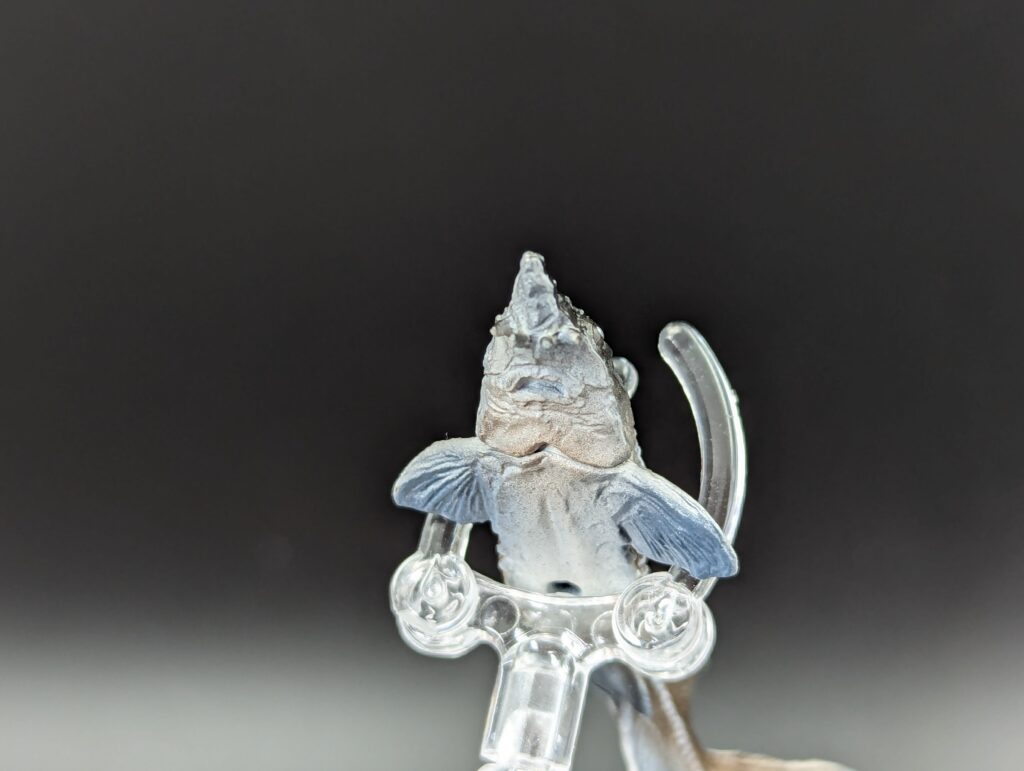
The head and opercula is sculpted as a separate piece that fits very tightly into place. It is painted light black with some dark grey highlight throughout the dorsum, with only the eyes standing out as points of shiny silver. The four nasal barbels are also painted black on the upper surface, and white underneath. The sculpt of the head is very detailed with a large amount of texturing and inscribed patterns reflecting the bony (well, mostly cartilaginous) skulls. The nostrils are present in front of the eyes as tiny, barely discernable indents. The mouth is sculpted open on the underside, with the interior painted the same as the rest of the ventrum.
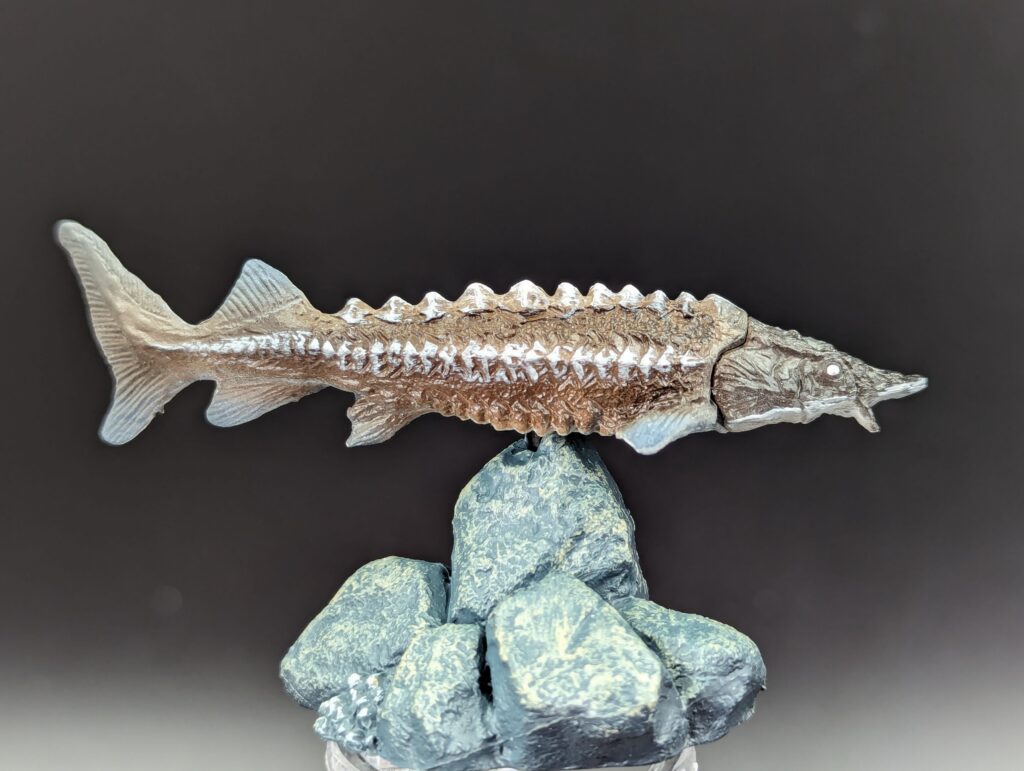
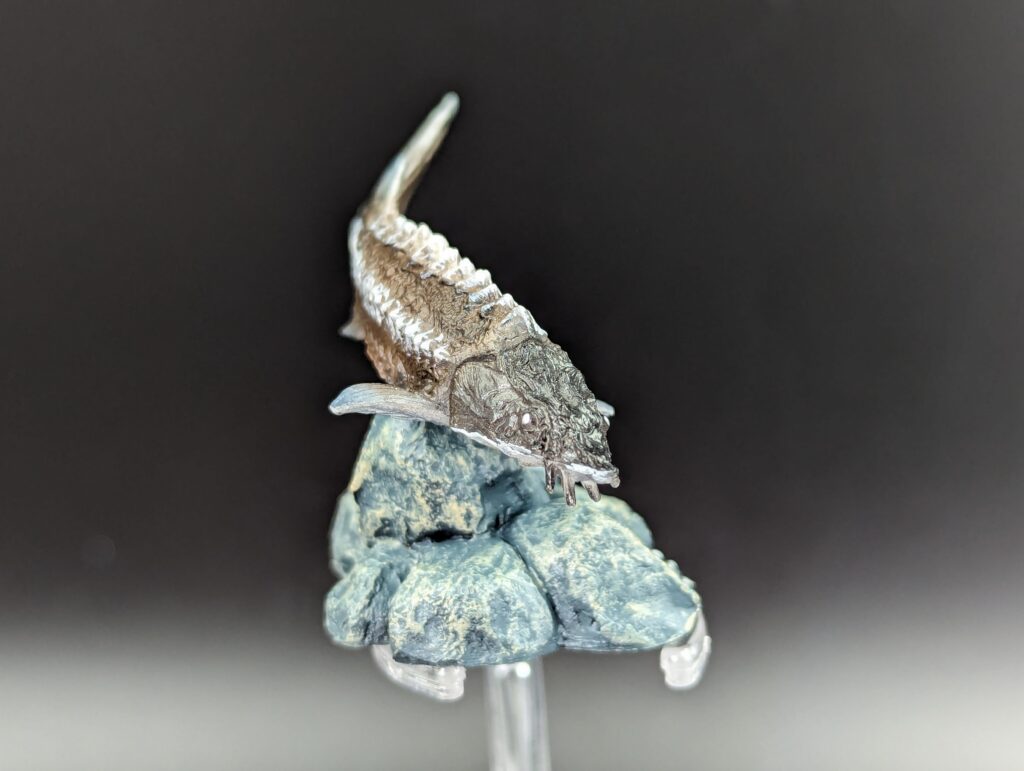
The scutes are sculpted distinctly where they should be found–one prominent row along the spine, one row on each side along the centre, and one rown on each side at the margin of the sides and belly. The lateral scutes are sculpted more as overlapping plates, while the ventral scutes appear as a series of recurved points. The dorsal spines are depicted with individual point, also recurved. The rest of the skin has a very fine, faint texturing, which is actually excessive, since sturgeon are scaleless except for the scutes. From a distance it might look like the wrinkles of skin, but up close it appears to have more intent (maybe it’s just the house style for the series?) The fins are well marked, with distinct rays extending out from all of them.
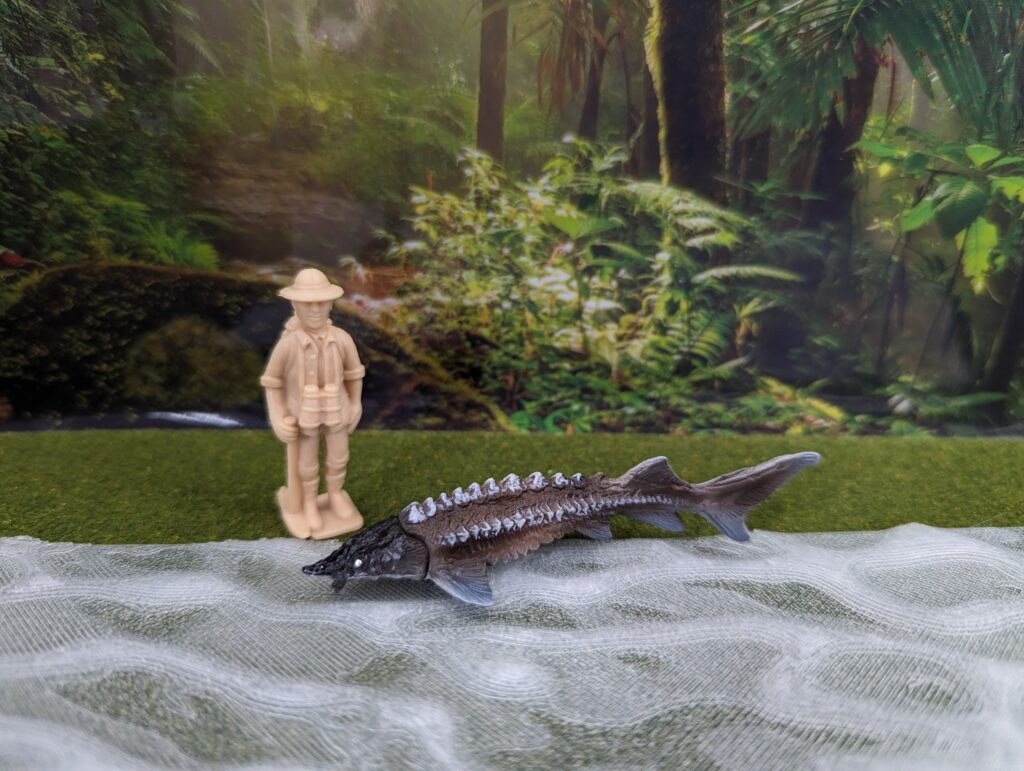
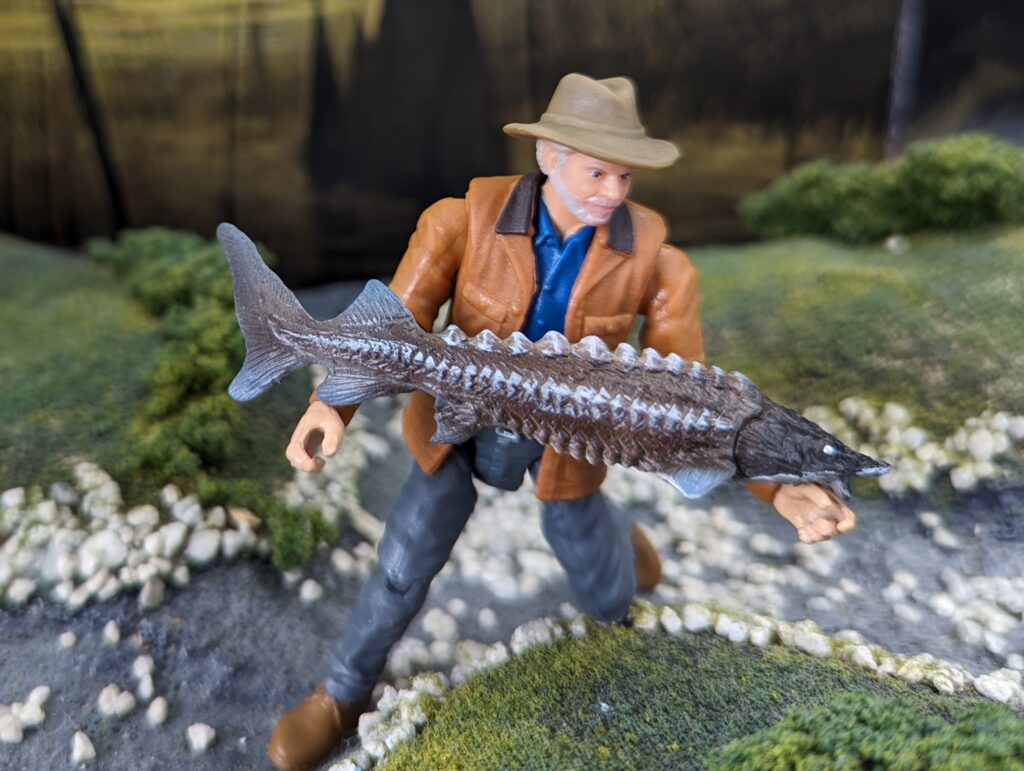
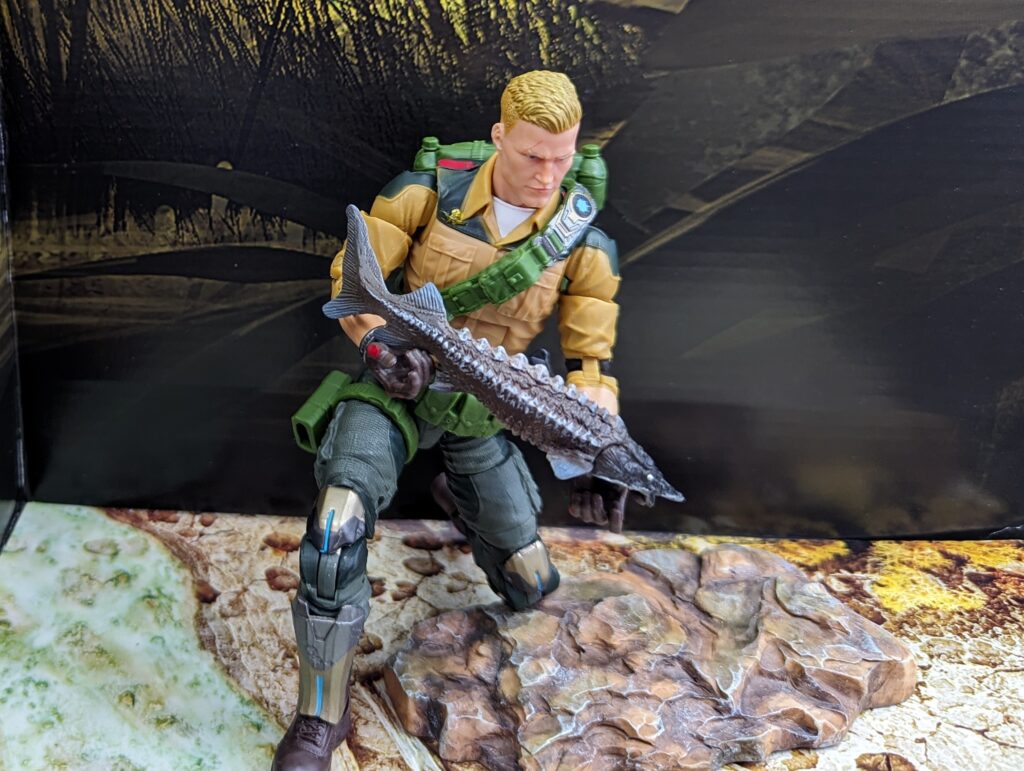
Overall, I would call this particular figure a pretty good representation of the species, and the set as a whole is a definite must for fans of freshwater or marine life; the variable scale should work for almost anyone depending on what you wish to represent! But specifically, this is a really good model of a sturgeon. There is at least one other Chinese sturgeon (from Colorata–slight variations between release one and two/three of the Fossil Fishes boxes) plus a slightly larger knock off. There are also quite a few other sturgeon models (I have about 20) of different species, but this one is an excellent version. Again, I can’t recommend it enough, and suggest hunting for it now while it might be more readily available (these sets always seem to have limited runs. Happy fishing!
Disclaimer: links to Ebay and Amazon on the AnimalToyBlog are affiliate links, so we make a small commission if you use them. Thanks for supporting us!



